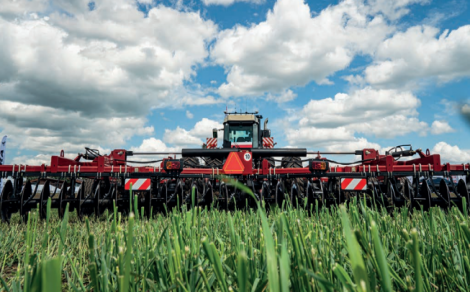Maximising durability with mobile equipment maintenance

Mobile equipment, ranging from construction machinery to agricultural vehicles, heavily relies on both pneumatic and hydraulic systems for its operation. These systems are integral to the performance and functionality of the equipment, and therefore their maintenance and durability are of paramount importance. Addressing these aspects effectively can enhance operational efficiency, extend the lifespan of the equipment, and reduce overall costs. H&P reports
Hydraulic and pneumatic systems are subject to rigorous conditions during operation. Hydraulic systems, which use pressurised fluids to transmit force, and pneumatic systems, which utilise compressed air, both face challenges related to wear and tear, environmental exposure, and maintenance demands. Understanding these challenges is crucial for ensuring the reliable operation of mobile equipment.
One of the foremost issues with hydraulic systems is the problem of wear and tear on components. Hydraulic pumps, cylinders, and motors experience significant stress during operation. Repeated cycles of pressurisation and depressurisation can lead to gradual degradation of seals, hoses, and valves. The performance of hydraulic systems can be severely compromised if these components fail or degrade. Therefore, routine inspections and timely replacements of worn-out parts are essential to prevent sudden breakdowns and ensure smooth operation.
Pneumatic systems, while generally simpler than their hydraulic counterparts, also face durability challenges. Compressed air systems can suffer from issues such as moisture contamination, which can lead to rust and corrosion of internal components. Moreover, pneumatic actuators and valves are subject to wear from continuous movement and the abrasive nature of compressed air. Regular maintenance is needed to check for leaks, ensure proper lubrication, and replace worn parts to maintain system efficiency.
Environmental factors significantly impact the durability of both hydraulic and pneumatic systems. Mobile equipment often operates in harsh conditions, including extreme temperatures, dust, and moisture. Hydraulic fluids, for example, can be affected by temperature variations, which influence viscosity and, consequently, system performance. Similarly, pneumatic systems exposed to excessive moisture may suffer from corrosion and reduced efficiency. Using high-quality, temperature-resistant fluids and incorporating protective measures against environmental elements can mitigate these issues.
Maintenance practices
Maintenance practices play a critical role in extending the lifespan of hydraulic and pneumatic systems. Implementing a comprehensive maintenance programme involves not only regular inspections and servicing but also proactive measures to prevent potential problems. For hydraulic systems, this includes checking fluid levels and quality, inspecting hoses and fittings for leaks, and ensuring that filters are clean and functional. Pneumatic systems require regular checks for air leaks, inspection of filters and regulators, and ensuring that lubricators are functioning correctly.
Advanced diagnostic tools and technologies are increasingly being utilised to improve maintenance practices. Sensors and monitoring systems can provide real-time data on the condition of hydraulic and pneumatic components, allowing for early detection of issues before they lead to significant failures. Predictive maintenance approaches, leveraging data analytics, enable more precise scheduling of maintenance activities based on the actual condition of the equipment, rather than relying solely on predefined intervals.
-
PPMA 2025
23 September, 2025, 9:30 - 25 September, 2025, 16:00
NEC, Birmingham UK -
Advanced Engineering Show 2025
29 October, 2025, 9:00 - 30 October, 2025, 16:00
NEC, Birmingham UK










